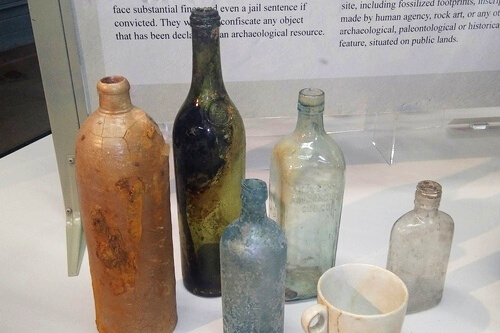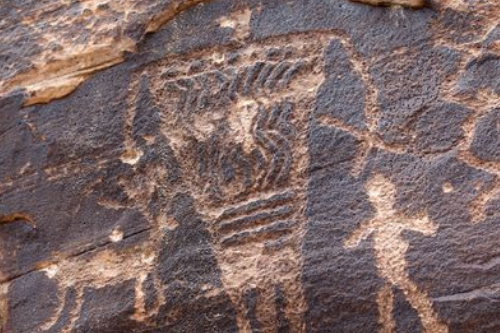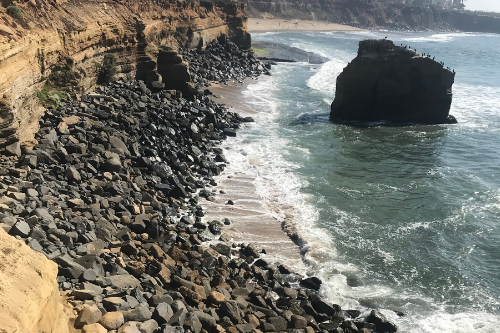
The Wonderful World of Marine Archaeology
The Wonderful World of… is a monthly blog focusing on some of the many themes, concepts, and sub-disciplines related to the fascinating world of Southern Californian archaeology.
What is Marine Archaeology?
Marine (or underwater) archaeology is exactly what you think it is – archaeology that is being conducted underwater. The practices used by archaeologists are many times very similar to (or often the same as) the practices and tools used for land archaeology. Obviously working underwater creates unique challenges which require special tools, like the use of an exosuit. Studying underwater sites like shipwrecks can be complimentary to land archaeology by piecing together even more of our past which had previously been lost to the water. Southern California is rich with cultural heritage and marine archaeology is providing archaeologists a closer look at the regions coast thousands of years ago.
What Tools Do Marine Archaeologists Use?
Hand tools, like trowels, tape measures, square units, pencils, and clipboards, are all used underwater by marine archaeologists. While many of the tools marine archaeologists use are similar to tools used on land, some are very specialized. Water does not allow for easy sifting, so archaeologists use a vacuum like tool that has a hose suck up the sediment from the ocean floor. Archaeologists are then able to inspect the sediment on the surface of the water using a floating screen.

An exosuit is another example of high-tech gear that marine archaeology sometimes relies on. This mechanical suit allows archaeologists to stay underwater for longer periods of time. It also gives them the ability to dive up to 1,000 ft below the water’s surface. It includes thrusters that help divers move around underwater and foot pedals to control them, leaving hands free. The suit is equipped with powerful LED lights and HD video records the entire dive. There are two claw-like grabbers that assist with cultural resource handling. Technology is ever-changing and the exosuit upgrades are constantly improving.
What Types of Sites Do Marine Archaeologists Study?
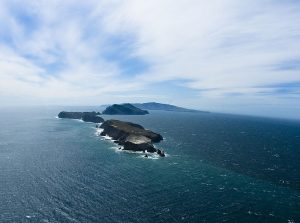
Shipwrecks are the most commonly studied underwater sites in marine archaeology. This shipwreck used to be the SS Monte Carlo. This concrete ship came to Coronado from Long Beach in 1936 and was used as an offshore gambling casino. In 1937, the Monte Carlo was grounded during a storm and remains here to this day. When the tide is low, you can sometimes catch a glimpse of the shipwreck from shore.
There is some really interesting work by the Slave Wrecks Project, an organization “dedicated to searching for shipwrecks from the most horrific and extensive trade of humans in world history.” Finding and studying these pieces of United States history that have until recently been majorly overlooked, gives us an opportunity to tell a more complete story by connecting our past to our present. Read more about the SWP and their incredible work.
While shipwrecks are the most commonly studied, there are many other types of underwater sites that are found and studied by marine archaeologists. As we know, climate change plays a huge role in our changing coastal landscapes. Many sites that used to be above ground or on land around the world are now found underwater because of rising sea levels.
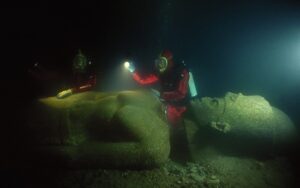
Photo credit: Franck Goddio/Hilti Foundation, photo by Christoph Gerigk
This statue is from the site Thonis-Heracleion. It is an underwater site rich with archaeological and anthropological finds and is still being studied today. All of the cultural resources found at this site are from the 8th century CE or before, which leads archaeologists to the conclusion that the city must have sank sometime before then. Over 700 ancient anchors have been found here and at least 60 shipwrecks have been identified by marine archaeologists.
Marine Archaeology in San Diego
Marine archaeology has been conducted in San Diego County for many decades. Because of the density of cultural resources that are found here, evidence points to the possibility of what is now considered offshore being the location of some of the region’s earliest settlements. In addition to understanding where and how people lived in the past, climate change is affecting our coastlines, and scientists and archaeologists work together to find answers. During the last Ice Age, glaciers in the region melted and sea levels rose. By conducting marine archaeology in the area, San Diego archaeologists know that the shoreline was much further west than it is now. Perhaps if we can learn more about how the people living then responded to the changing sea levels, we can find answers to our own climate challenges. A partnership between Scripps and UC San Diego led to the creation of the Scripps Center for Marine Archaeology led by John Hildebrand and Thomas Levy. SCMA’s mission is to investigate, understand and communicate the intersections, interactions and interconnections between people and the sea through time, seeking a holistic, interdisciplinary understanding of marine, coastal, and environmental archaeology – and thus helping to advance marine archaeology as a field. The program assists graduate students in their marine archaeology degrees and hosts field schools around the world, making significant research contributions.
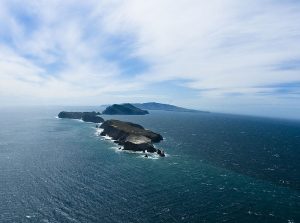
These are the Channel Islands of Southern California. The oldest shell middens in North America were discovered here. Marine archaeologists have been studying these islands, the cultural resources discovered, and their waters for some time. There is evidence that suggests this may be the earliest settlement in this part of the world. Learn more about archaeology at the Channel Islands.
Conclusion
Marine archaeology focuses on more than just excavating underwater cultural resources. Collaborations with other field specialists like maritime biologists, engineers, and geoarchaeologists allow for investigations of topics such as climate history and the effects of long-term climate change. With many specialists and disciplines working together looking at the broader context and study of archaeological landscapes as a whole, we can learn more from our past than ever and make significant contributions in research and knowledge for the future.
by Jessica McPheters, Collections Manager
Learn More


